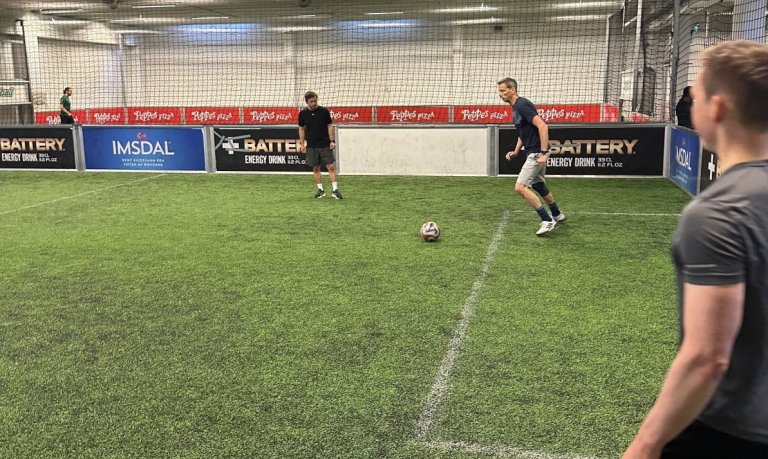Item and the Enonic Partner Journey

featureArticle.chapters
featureArticle.introduction
Founded in 1999, Item Consulting is a Norwegian technology firm that focuses on long term relationships with customers in digital projects, development, advisory, and project management. Resilience, stability, and quality are key values to achieve these goals.
Item relies on in total 582 years of experience divided on 32 senior-level employees. With this as a foundation, the firm helps brands such as TINE, Norway Post, Bring, Gjensidige, the Norwegian Food Safety Authority, the Directorate of Fisheries, Statistics Norway, NIVA, Cicero, and TechnipFMC succeed in the digital realm.
Having had dealings with Enonic since 2011, Item has since risen to become a Premium Solution Partner. But why did the technology firm choose Enonic as their main platform?
Why Item Became a Partner
For Item, Enonic is a perfect fit due to being a fellow Norwegian company, which allows for close proximity to the vendor. With such closeness to both partners and customers, Enonic on their hand deliver another level of reliability for Item’s customers.
The Enonic platform itself fits a large group of Item’s customer base. Whether it’s about delivering an application or a website, large or small customers, an open source or a supported solution, or just customers who need to comply with regulations, Item can support them with a scalable platform.
Caring about the big picture and long term gain, Item found in Enonic both a solution they believe in and a company with whom they can pursue mutually beneficial goals. The open Enonic roadmap allows Item to see future developments, while the Enonic partner program sustains them with licensing, revenue share, training, certification, and a reliable app market.
All in all, Item deemed it worth spending time and energy on a long term and transparent partnership with Enonic, whose track record and customer portfolio fit their own requirements of trust, references, continuity, and stability.
Partnering with Enonic gives us direct access to decision-makers and a scalable platform that fits our clients’ diverse needs—ensuring reliability, trust, and long-term success built on shared values and personal chemistry. Erik Borse, Business Development Manager, Item
Developers Chose Enonic
Item has traditionally been driven by their experienced developers that put new technology to the test and provide technical insights which help shape the company’s strategy and choices.
This process was no different with Enonic. Developers discovered Enonic and brought it before the management, who then told them to “prove that it works.” The developers created a product with Enonic, which impressed the management.
Simply put, Item solves user tasks with Enonic. For the Item developers, it is a robust platform where they can build custom solutions. According to them, Enonic provides server-side TypeScript, great performance, and full feature core libraries that cover their use cases.

Goal of the Partnership
Item is always striving for excellence, and one of their main goals with the Enonic collaboration is to be a preferred partner. Item understands the major benefits of such a symbiotic relationship, thus letting Enonic give them as much support as possible in bids, etc.
Not wanting to be an in-and-out vendor, Item seeks long term customer relationships. This is of course augmented by Enonic’s similar philosophy. The two companies help each other develop as organizations, help expand customer portfolios, and help each other do business by achieving happy customers.
Customer Challenges
Before implementing the Enonic platform, many Item customers struggled with a range of digital challenges that hindered their operational efficiency and user engagement.
One common issue was the cumbersome nature of legacy websites and content management systems. These platforms often prove to be slow and inflexible, making day-to-day tasks for content editors tedious and time-consuming. The lack of intuitiveness in these systems meant that even simple updates required significant effort or additional development, delaying content delivery and impacting overall productivity.
Performance was another critical concern. Websites could often suffer from slow load times, leading to a subpar user experience that could deter visitors and affect brand perception.
Item was very solution-oriented. Everything went very smoothly, and we really didn't experience any challenges. Christian Bjørnæs, Communications Director, Cicero
Additionally, organizations faced limitations in creating flexible solutions that could adapt to their evolving needs. The existing digital platforms did not offer the versatility for content editors to address future requirements independently. This often resulted in a reliance on continuous development cycles for even minor changes, increasing costs and extending timelines.
A notable example is the Norwegian Food Safety Authority. They encountered challenges with the quality assurance and management of concern reports, which are critical for maintaining food safety standards. The process for users to submit these reports was complicated and inefficient, leading to decreased public engagement and potential risks in food safety oversight.
These challenges underscored the need for a more agile, efficient, and user-friendly CMS solution. Item’s customers required a platform that could offer out-of-the-box functionality while still allowing for bespoke customizations to meet specific needs. The goal was to find a solution that combined the best of both traditional and headless CMS capabilities—something that Item and Enonic was uniquely positioned to provide.

How Item Works with Enonic
Item has developed a comprehensive approach to integrating the Enonic platform with their projects, ensuring that clients receive tailored solutions that meet their unique requirements. Their methodology is structured into the following key phases:
Insight Phase
The journey begins with Item collaborating closely with clients to identify user needs and to map out customer journeys. This in-depth phase is crucial for shedding light on how users actually accomplish their tasks and determining which tasks are most important.
By thoroughly understanding these elements, Item helps clients gain valuable insights into their own operations, often revealing opportunities for improvement that were previously overlooked.
Design Phase
Next is the design phase, focused on crafting intuitive and user-friendly interfaces. Item often handles design and user experience (UX) in-house, leveraging their expertise to create engaging digital environments.
They also collaborate with external agencies like Netlife when it benefits the project. This flexibility allows them to combine strengths and deliver designs that align perfectly with the client’s brand and user expectations.
Our new publishing tool is a game-changer in terms of the flexibility to shape the website as we want it. We are also very pleased that our integrations and customized solutions are more robust and efficient. Gunnar Omsted, Senior Advisor, NIVA
Development Phase
During development, Item places a strong emphasis on continuous client involvement. Clients are encouraged to produce content and utilize the modules that Item delivers incrementally.
This collaborative approach helps in identifying and rectifying bugs or errors early on, ensuring a smoother development process. By the project’s conclusion, clients are well-acquainted with the solution, minimizing the learning curve and speeding up the delivery of the final product.
Follow-up
Post-launch, Item remains actively involved through a robust follow-up process. They provide ongoing advisory services, offering support from the same team members as the initial project to maintain continuity.
This commitment provides clients with a sense of security and stability, knowing that expert assistance is readily available. With around 15 experienced consultants well-versed in Enonic—many of whom have worked on complex projects—Item can offer face-to-face consultations, primarily in Norway and Oslo, with a local office in Tromsø, which enhances the collaborative experience.
Item has delivered a solution that performs very well and a project that went smoothly. High quality in what has been done. Stina Korsbøen, Head of Digital Platforms, TINE
Collaboration with Enonic
Item’s partnership with Enonic extends beyond project implementation; it also encompasses joint efforts in bids, prospecting, and marketing. When approaching potential projects, the two partners start with collaborative meetings to thoroughly understand the case and determine the optimal delivery strategy. Responsibilities in bid proposals are allocated based on expertise, with both teams working iteratively to refine their approach.
In prospecting, Item and Enonic operate both independently and together, sharing leads and providing mutual support by joining meetings when advantageous. Marketing efforts are also collaborative; Enonic for instance offers an “Inbound Booster Pack,” which provides partners like Item with blog posts aimed at enhancing SEO and showcasing capabilities.
Item, in turn, promotes Enonic within their network, publishes case studies on their website, participates in Meetups, and contributes apps to the Enonic Market. This symbiotic relationship strengthens the market positions of both companies and enriches their offerings to clients.

Developer Onboarding and Teamwork
Recognizing the importance of expertise in delivering high-quality solutions, Item invests in the professional development of their team. Nearly all employees undergo Enonic training to ensure a deep understanding of the platform. New developers are integrated into Enonic projects early on, even if not as primary developers, to build familiarity with the platform.
Mentorship plays a key role in this process. Experienced team members guide newcomers, not only in mastering Enonic but also in adopting “the Item way”—a consistent approach to processes and use of libraries. This methodology ensures that any developer can quickly become productive on any project, maintaining high standards of quality and efficiency.
Item fosters a collaborative work environment characterized by transparency. Employees are encouraged to ask questions and learn from mistakes, promoting a culture where it’s acceptable to fail in order to grow. This ethos enhances teamwork and leads to the development of innovative solutions that benefit clients.
Results
There is hardly a surprise that Enonic is a vital part of the Item ecosystem and economy. Approximately 50% of the Item employees work on Enonic projects, and at least 1/3 of the company revenue stems from pure Enonic consultancy hours. This does not include categories like project management and test functions.
As for the softer side of things, Item both enjoys and expects to be a part of the Enonic community through participation in Meetups and online forums. Item thinks it is important to provide to the community with questions, solutions, and experience sharing, in order for Enonic, partners, and customers to grow further.
For both Item and Enonic, it is important to be visible. It is paramount to show that the vendor and skill sets are close in proximity to customers in Norway.
Item is a highly dedicated and self-driven partner, making collaboration seamless and effective. Their commitment to ensuring their developers are Enonic certified and involving us strategically in projects and bids speaks to their professionalism. Kristian Lanes, SVP Sales and Partners, Enonic
Future Outlook
Item takes great strides to put themselves into the customer’s position, in order to provide advice. Customer insights and customer competency are thus two important key features of the Item business ethics.

They have a size where they can deliver to large customers, but can still deliver a bespoke solution and provide them with a flexible and local vendor.
Item predicts that they and Enonic are in a position where they can continue to grow, snatch larger market shares, and start larger projects together. The technology firm also wants to bring Enonic into new segments, for instance the research industry and eCommerce, through integrations and self service functionality.
***
Contact us to learn more about a partnership with Enonic.
